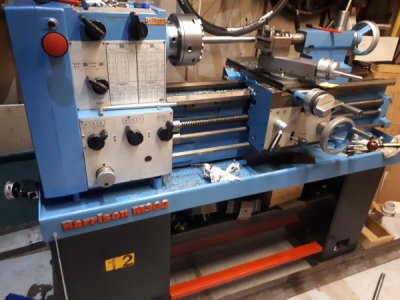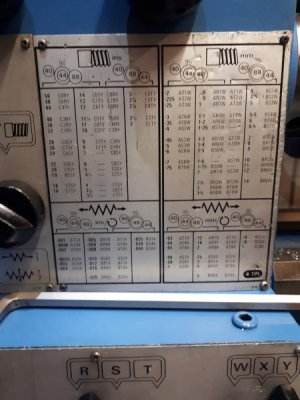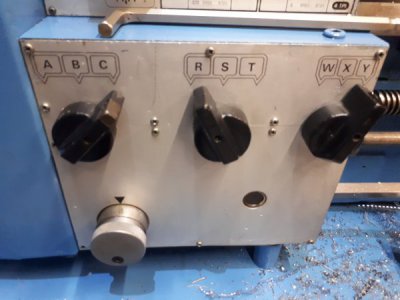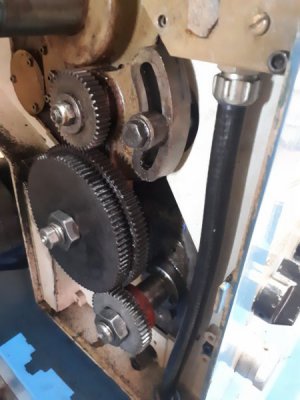Hi all
I know threading is discussed a lot and I should trail through posts to help with my question, which I have and found no answer to this puzzling conundrum so here I go, I'm afraid. I have restored a Harrison M300 imperial lathe recently. Levelled it to a reasonable cutting standard, minimal taper over 100mm. Happy.
Now I am trying to thread. I must tell you, my other lathe I used only had the keep the half nut engaged,rewind and cut again method. The only option for my small hobby lathe. Competent and confident doing this. Cut many threads up to 3mm.
This fine cutting machine I have now has my hair falling out. So as not to confuse I will explain what's going wrong. The Harrison has a 4tpi lead screw. It has a 16 tooth imperial thread counter,all good. To cut a 14 tpi I engage the half nut at position 1 or 8 cut the thread disengage the half nut pull out the cross slide wind apron back to start wind cross slide back into zero, wind in cut on compound, engage half nut on number 1 or 8 as first done and repeat until thread fits my thread gauge. HAPPY. Also using the 30 degree angle method while cutting threads. But No. Every time I re-engage the half nut at number 1 for example it does not go into the thread precisely, it will cut another thread just in front of the previous one. I have tried many different thread sizes and all seem to do the same. I think someone has had the dial off the counter to paint it and may not have put it on correctly but I can not see any datum marks to do this either. So number one may be number 7 for all I know. That would put things out of sync. I also cut a 3mm metric thread using the engaged half nut and reverse method as manual states and this never fit my 3mm thread gauge very well. Not like my other lathe has done. Gearing is also correct as displayed on front screw cutting chart I don't know if this is due to wear of cogs but I saw very little wear while dismantled for a 35 year old machine. Any help will be greatly appreciated.
Regards
John
I know threading is discussed a lot and I should trail through posts to help with my question, which I have and found no answer to this puzzling conundrum so here I go, I'm afraid. I have restored a Harrison M300 imperial lathe recently. Levelled it to a reasonable cutting standard, minimal taper over 100mm. Happy.
Now I am trying to thread. I must tell you, my other lathe I used only had the keep the half nut engaged,rewind and cut again method. The only option for my small hobby lathe. Competent and confident doing this. Cut many threads up to 3mm.
This fine cutting machine I have now has my hair falling out. So as not to confuse I will explain what's going wrong. The Harrison has a 4tpi lead screw. It has a 16 tooth imperial thread counter,all good. To cut a 14 tpi I engage the half nut at position 1 or 8 cut the thread disengage the half nut pull out the cross slide wind apron back to start wind cross slide back into zero, wind in cut on compound, engage half nut on number 1 or 8 as first done and repeat until thread fits my thread gauge. HAPPY. Also using the 30 degree angle method while cutting threads. But No. Every time I re-engage the half nut at number 1 for example it does not go into the thread precisely, it will cut another thread just in front of the previous one. I have tried many different thread sizes and all seem to do the same. I think someone has had the dial off the counter to paint it and may not have put it on correctly but I can not see any datum marks to do this either. So number one may be number 7 for all I know. That would put things out of sync. I also cut a 3mm metric thread using the engaged half nut and reverse method as manual states and this never fit my 3mm thread gauge very well. Not like my other lathe has done. Gearing is also correct as displayed on front screw cutting chart I don't know if this is due to wear of cogs but I saw very little wear while dismantled for a 35 year old machine. Any help will be greatly appreciated.
Regards
John






